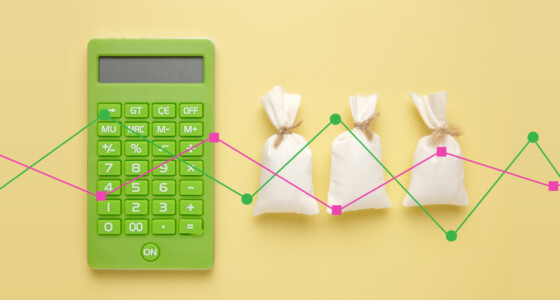

We are seeing fewer and fewer millennials investing in the stock market – and if we were completely honest, we wouldn’t actually be surprised. Before they even hit 20, millennials went through two massive recessions, one being the Great Recession, dubbing them the unluckiest generation that the entire world may have ever had. A troubling fact: millennials have only accumulated 50% of their parents’ net worth at the same age. This would presumably mean that they need to be more conscious about investments and financial strategy in general. Are they, though?
They prefer to invest in savings accounts rather than stocks, as the former seem far less risky. The problem is that making a decision based on economic history may lead to more disadvantageous results once a person retires. The numbers never lie, and by reading this article, you can find out how the results depend on your investment choice.
What do the numbers say?
Nowadays, millennials invest more in cash savings, as it seems the safer option, especially in the short term. However, in the long term, the numbers show that this strategy might cause you to lose additional income. For instance, let’s take a $10,000 investment in a cash savings account, with a 1.5% rate over 30 years.
By the time those 30 years go by and you hit retirement age, those investments will be worth $15,630. This means that if you somehow manage to come up with $10,000 right now, you will have only earned slightly over $5,000 in interest. That’s hardly enough to provide for a fulfilling retirement, unless you plan on never leaving the house.
Inflation also has a significant impact on your funds’ purchasing power. History shows an average of 2% inflation rate – so, by putting your funds in a savings account rather than investing them, you are losing the purchasing power of your own funds.
Now, let’s take the same initial deposit and use it to invest instead. Historically speaking, investing in the stock market has an average return of 9%. Therefore, if you leave that $10,000 invested in stocks, by the time those 30 years pass, the initial deposit would be worth a total of $132,676. Compared to a savings account, you get around 20 times your investment return.

The cause of the dark years
We’ve established that the average stock market return these days is far more lucrative compared to cash savings – but what about the years when the stock market is not quite as welcoming? What if something like the last recession happens again and the stock market begins to lose a lot of its value?
This is a very fair concern, but at the same time, there is a solution to hedging that risk. Most investors advise that once this happens, you just need to remain in the stock market and abstain from timing your investments or making big decisions. Most of these stock market crashes and losses happen simply because investors panic-bought or panic-sold stocks.
Letting your investment sit
Some investors will buy stocks when stock prices are low. Once the stock market regains its balance and the stocks gain back their value, the investors will start seeing bigger returns in their retirement accounts. On the other hand, they may also buy when stock prices are at their peak, only to see the stock prices falling and lowering their returns.
That being said, even if you fall victim to the latter version of events, and your stocks end up on a lower end, you’ll still get more returns as compared to a standard retirement account. Plus, there’s a chance that the returns will increase again in the future.
The stock market inevitably experiences fluctuations, so it’s impossible to determine exactly what end you are going to be at. You may hit the jackpot, or you may have a slower run. It’s important to keep your cool and put your additional funds into the stock market as soon as you can.

Managing stocks with debt
Millennials represent the generation that is struggling most vigorously with debt, mainly because of high mortgage prices, tuition costs, and healthcare. This is why investors need to be cautious, so that their debt does not overlap with their investments. For the returns to be successful, millennials are advised to get their debt in order.
This does not mean that millennials need to put off investing simply because they still have debt. What they need to do is manage that debt, and get their finances in order. For example, if you have a mortgage with a high interest rate or a high-payment credit card, you might want to get it paid off, closed, or refinanced.
Moving forward
We’ve had a whole history of recessions that makes us uncertain whether we want to invest anything at all. That being said, the rates speak for themselves, saying that we should still give stock investments a try. Even at their lower points, stocks still seem to bring higher returns. So, as a millennial taking the leap, you will most likely be grateful you did.







